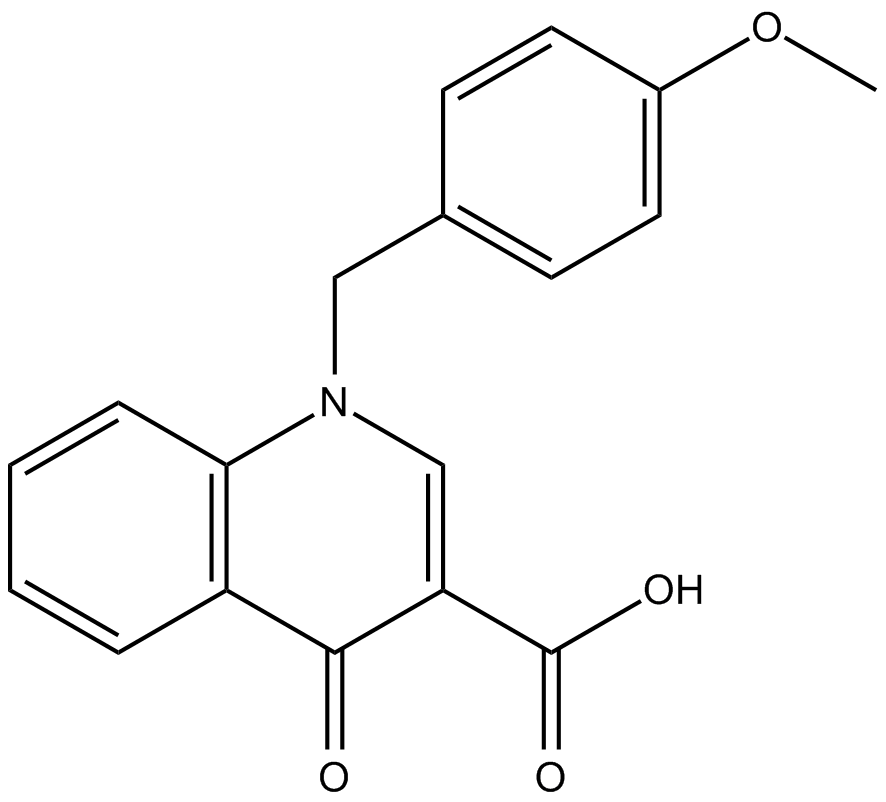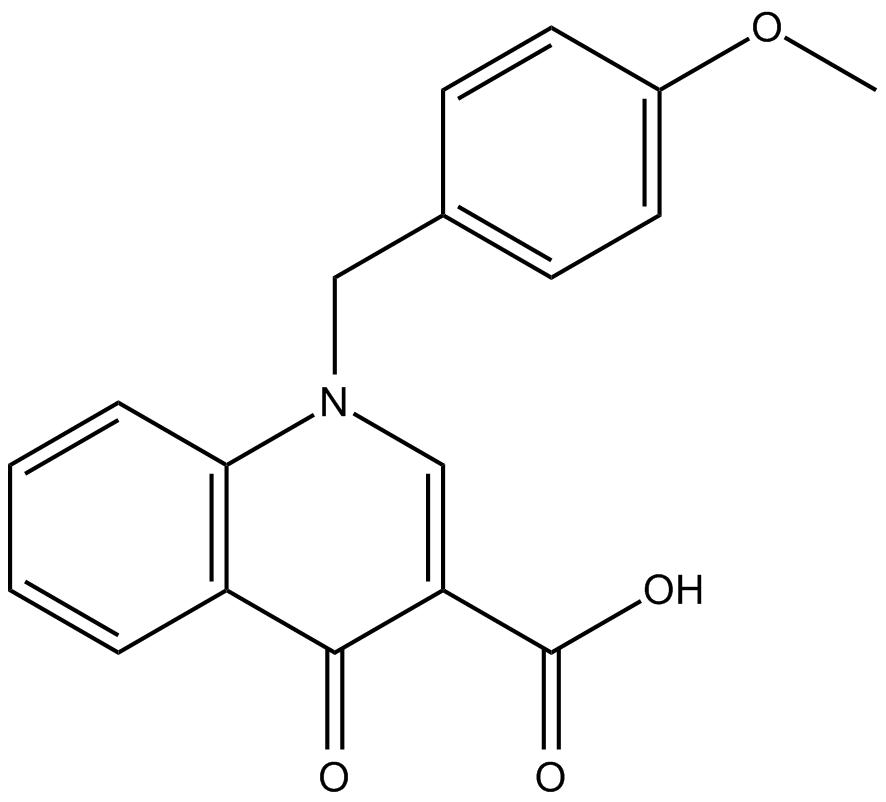BQCA
Benzyl Quinolone Carboxylic Acid (BQCA) is a highly selective allosteric potentiator of the M1 muscarinic acetylcholine receptor (mAChR) [1].
M1 is most abundantly mAChR expressed in the hippocampus, cortex, and striatum, and localizes to postsynaptic membranes. M1 regulates several ion channels such as KCNQ inwardly rectifying K+currents, voltage-gated calcium channels, and NMDA receptors. M1 mediates the cognitive effects of ACh. M1 activation could slow AD progression by reducing Aβ42 peptides [1].
In vitro: BQCA alone showed no effect on calcium mobilization up to 10 μM but increased ACh potency 128.8 ± 20.1-fold at 100 μM. In CHO cells stably expressing human M1, BQCA (100 μM) activated M1 in the absence of ACh to an approximate 50% maximal response. BQCA had no effect on M2–M5, indicating 100-fold selectivity [1]. BQCA dose-dependently reduced the concentration of acetylcholine required to activate the M1 receptor [1]. The effective range for potentiation of M1 in cells by BQCA was 0.1 to 100 μM, with an inflection point value of 845 nM when 3 nM acetylcholine was used [1].
In vivo: In wild-type mice, BQCA (15 mg/kg) induced c-fos and arc RNA in the cortex, hippocampus, and cerebellum and the arc was also elevated in the striatum. BQCA had no effect in M1-/- mice. In wild-type mice, oral administration of 15 mg/kg BQCA increased the ratio of phosphoERK (pERK) to total ERK by 28%. BQCA showed excellent brain penetration and increased the firing rate of medial prefrontal cortex neurons in vivo in rats [2].
References:
[1] Ma L, Seager M A, Wittmann M, et al. Selective activation of the M1 muscarinic acetylcholine receptor achieved by allosteric potentiation[J]. Proceedings of the National Academy of Sciences, 2009, 106(37): 15950-15955.
[2] Shirey J K, Brady A E, Jones P J, et al. A selective allosteric potentiator of the M1 muscarinic acetylcholine receptor increases activity of medial prefrontal cortical neurons and restores impairments in reversal learning[J]. Journal of Neuroscience, 2009, 29(45): 14271-14286.
| Storage | Store at -20°C |
| M.Wt | 309.3 |
| Cas No. | 338747-41-4 |
| Formula | C18H15NO4 |
| Solubility | ≥30.9 mg/mL in DMSO with gentle warming; insoluble in EtOH; insoluble in H2O |
| Chemical Name | 1,4-dihydro-1-[(4-methoxyphenyl)methyl]-4-oxo-3-quinolinecarboxylic acid |
| SDF | Download SDF |
| Canonical SMILES | COc1ccc(CN(C=C2C(O)=O)c(cccc3)c3C2=O)cc1 |
| Shipping Condition | Small Molecules with Blue Ice, Modified Nucleotides with Dry Ice. |
| General tips | We do not recommend long-term storage for the solution, please use it up soon. |
Quality Control & MSDS
- View current batch:
Chemical structure









